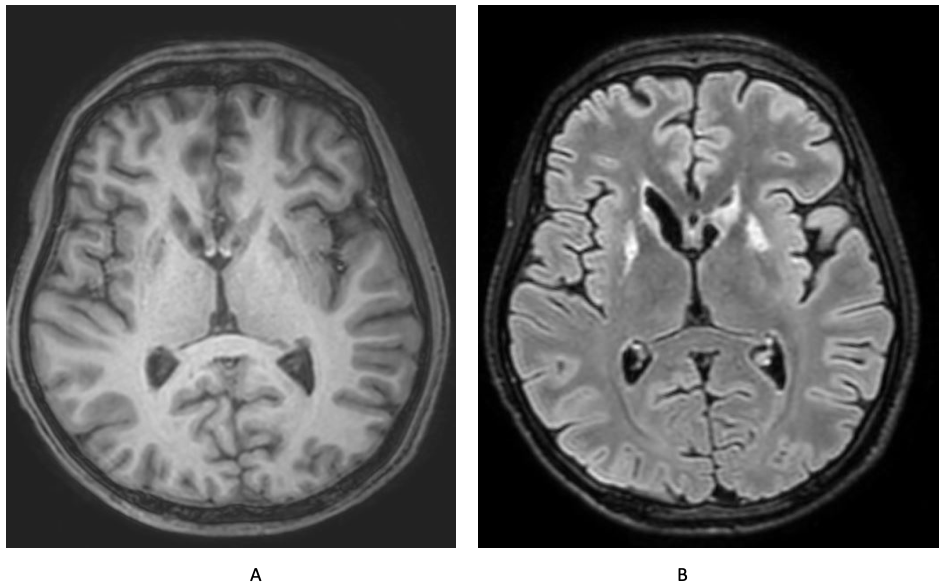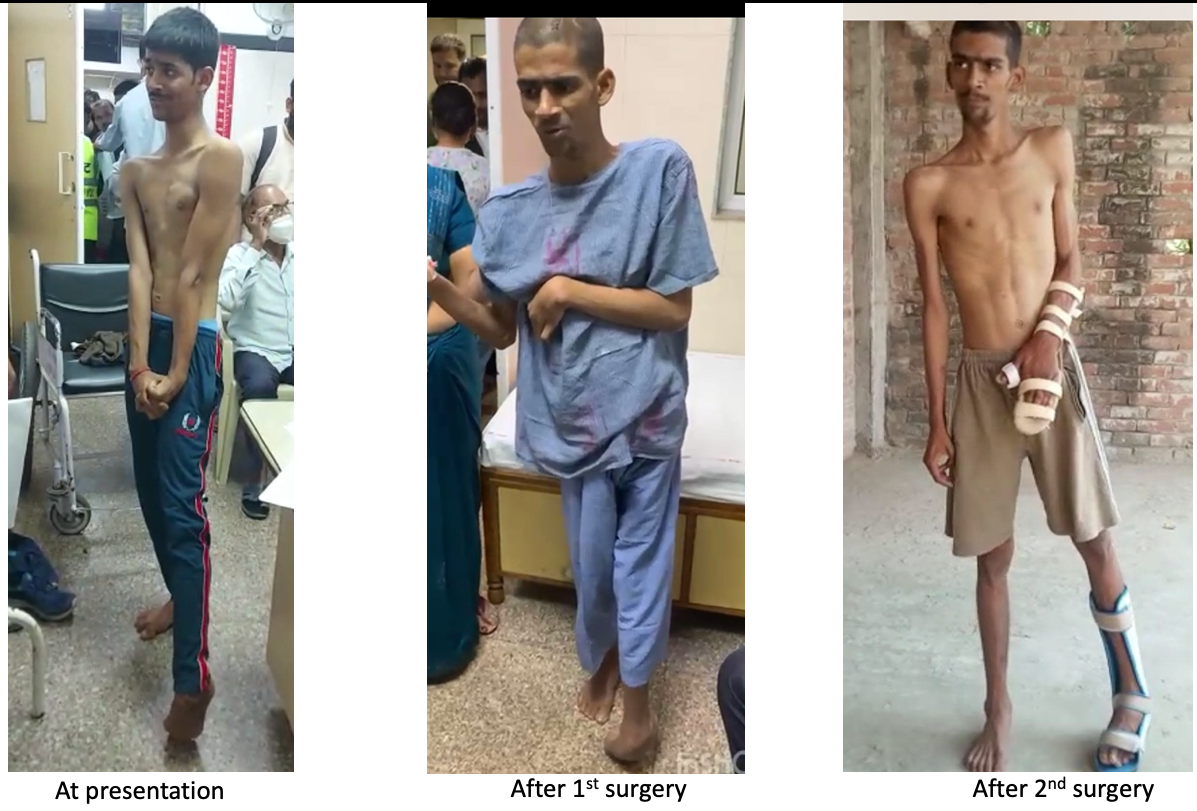Objective: Reporting a case of hemi-dystonia (with involvement of trunk) secondary to encephalitis and its response to staged bilateral pallidotomy.
Background: In the Axis 1 classification of dystonia by Albanese et al, dystonia has been subclassified into focal, segmental, multifocal, generalized and hemi-dystonia.1 The treatment part of hemi-dystonia has also been blurred with some reports showing benefit from unilateral thalamotomy/pallidotomy2 to some reports showing benefit from unilateral two site deep brain stimulation3. There are reports where unilateral lesional surgery was followed by bilateral deep brain stimulation for hemidystonia.4
We discuss a case of hemi-dystonia with the probable origin being post-encephalitic. Hemi-dystonia involving trunk may require bilateral lesional surgeries or deep brain stimulation, as is shown in our case.
Method: A 20-year-old right-handed male presented with persistent isolated generalized dystonia for one year. Initially, symptoms started intermittently in left lower limb in the form of stiffness and downward and inward in turning of ankle joint which gradually increased in frequency over the next 2-3 weeks. Over the next 8 months, he had gradually developed flexed dystonic posturing of left elbow and wrist. For the last 2 months, he had dystonic involvement of his left half of face, left neck muscles, left paraspinal muscles and speech. At 5 years of age, he had febrile encephalopathy with altered sensorium for 1 month from which he recovered. On neurological exam, he had right torticollis, lingual dystonia, axial involvement (involving left paraspinal muscles) and left upper and lower limb dystonic posturing.
Results: Wilson’s workup was within normal limits. MRI brain was suggestive of T2 signal changes in bilateral basal ganglia which was similar to MRI changes, he had during his admission at 5 years of age for febrile encephalopathy (Figure 1).He did not have any significant response to trial of levodopa and anti-dystonic medications. He was planned for staged pallidotomy. Post right pallidotomy, FMDRS scale decreased from 65.5 to 53.5 while dystonia disability scale reduced to 12 from14. He developed mild bulbar dysfunction. He was admitted again for left pallidotomy, following which FMDRS reduced to 42 (Figure 2).
Conclusion: Hemi-dystonia (involving trunk) may respond to bilateral surgeries (lesional/deep brain stimulation) rather than unilateral one.
References: 1. Albanese A, Bhatia K, Bressman SB, Delong MR, Fahn S, Fung VS, Hallett M, Jankovic J, Jinnah HA, Klein C, Lang AE, Mink JW, Teller JK. Phenomenology and classification of dystonia: a consensus update. Mov Disord. 2013 Jun 15;28(7):863-73.
2. Taira T, Hori T. Stereotactic ventrooralis thalamotomy for task-specific focal hand dystonia (writer’s cramp). Stereotact Funct Neurosurg. 2003;80(1-4):88-91.
3. Goulenko V, da Costa Cruz PL, Niemeyer Filho P. Unilateral thalamic and pallidal deep brain stimulation for idiopathic hemidystonia: results of individual and combined stimulations. Case report. Neurosurg Focus. 2017 Jul;43(1):E2.
4. Brown EG, Bledsoe IO, Luthra NS, Miocinovic S, Starr PA, Ostrem JL. Cerebellar Deep Brain Stimulation for Acquired Hemidystonia. Mov Disord Clin Pract. 2020 Jan 8;7(2):188-193
To cite this abstract in AMA style:
S. Yadav, A. Das, A. Srivastava. Hemi-dystonia secondary to encephalitis and its response to staged pallidotomy [abstract]. Mov Disord. 2023; 38 (suppl 1). https://www.mdsabstracts.org/abstract/hemi-dystonia-secondary-to-encephalitis-and-its-response-to-staged-pallidotomy/. Accessed April 1, 2025.« Back to 2023 International Congress
MDS Abstracts - https://www.mdsabstracts.org/abstract/hemi-dystonia-secondary-to-encephalitis-and-its-response-to-staged-pallidotomy/


